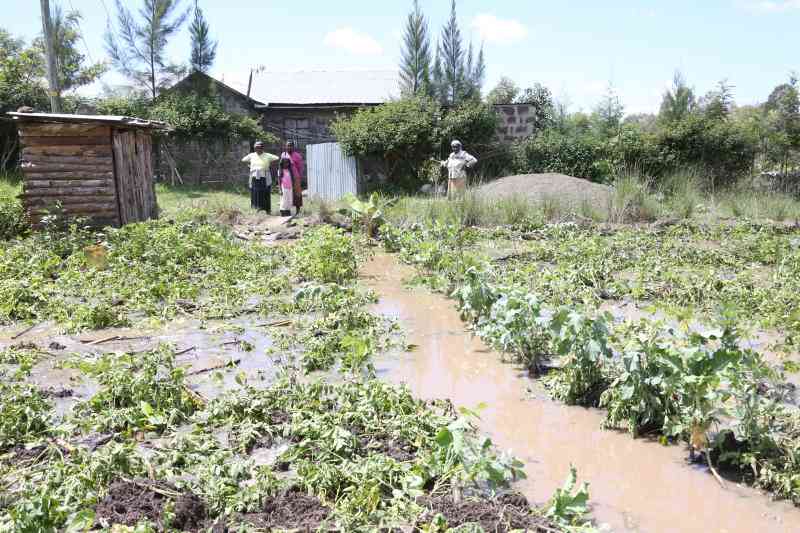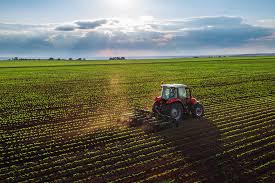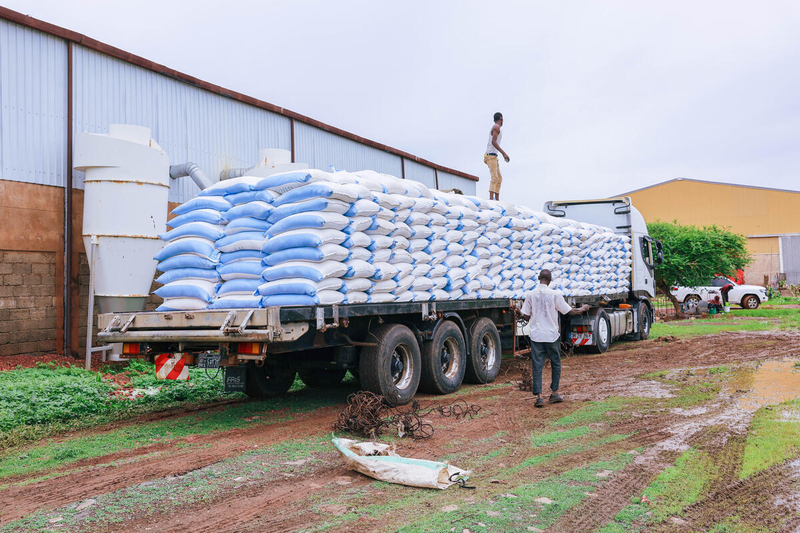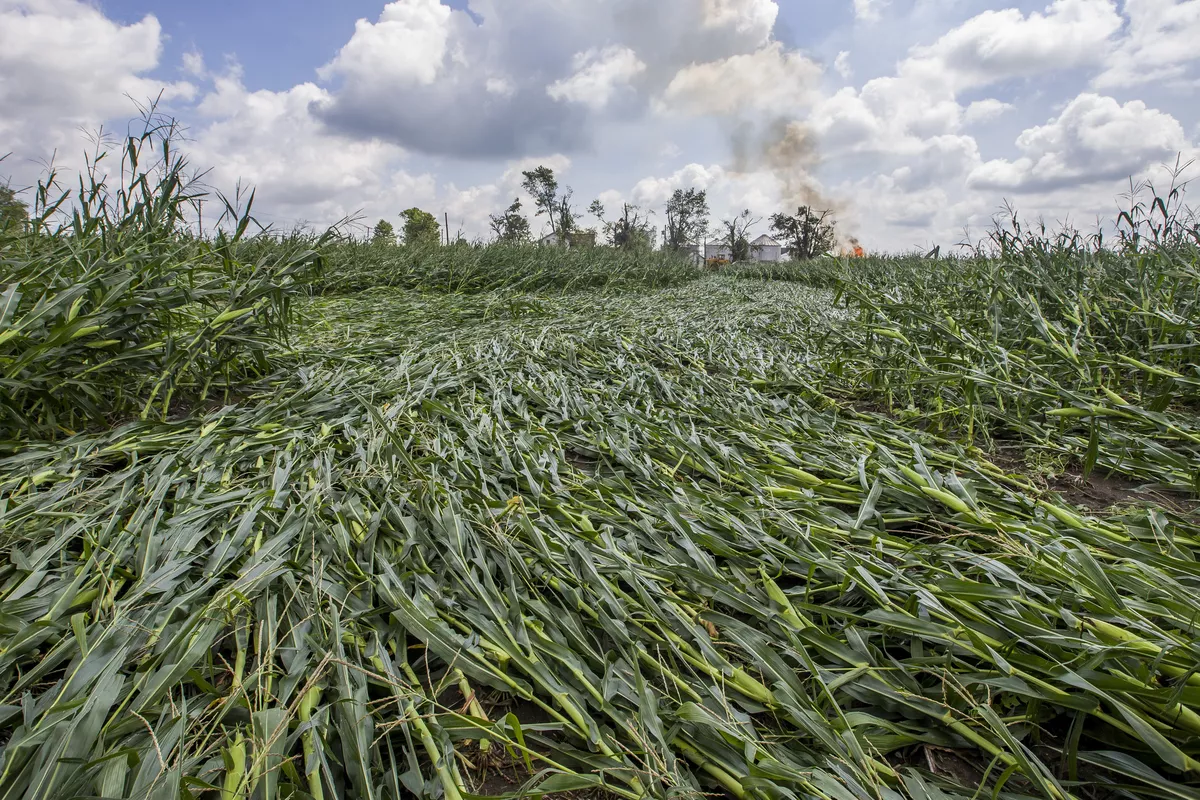A few weeks ago, as Micah Onyango, a farmer from Kisumu planted seedlings in anticipation of a bountiful fall harvest, heavy rains and hailstones shattered his hopes, devastating crops like kale, eggplant, and green grams.
Earlier in the year, the story was similar; it was a trail of heartbreak for many farmers in Nyando, Nyakach, Muhoroni, and surrounding areas, where floods wreaked havoc on crops worth millions of shillings.
The impact, detailed in a report by the County Department of Agriculture, reveals staggering losses. In Ahero alone, farmers lost 500 acres of maize valued at Sh18 million, 400 acres of sorghum at Sh9 million, 400 acres of beans at Sh24 million, and 25 acres of rice at Sh900,000.
The report showed Nyando was the most affected, followed by lower Nyakach, lower parts of Muhoroni, Kisumu East, and parts of Seme.
“The loss of the crops is a very tangible way to measure the flood, but the loss of the work is hard to measure, We are all grieving and heartbroken because of this,” said Onyango.
As the first drops fell, the farmers rejoiced, believing that the heavens were blessing their land, but the gentle drizzle quickly transformed into a relentless downpour and the once-parched earth now became saturated, unable to absorb any more water.
Onyango explained how he watched with a heavy heart as his crops, once vibrant and full of life, now stood submerged in muddy water. The fields that were once his source of pride were now a watery graveyard for his dreams and hard work. The incessant rain had turned his once-prosperous farm into a desolate landscape.
“When water is rising, that is the big concern because you get a lot of standing water and the soil starts to loosen up, turns into mud and the mud starts to wash away. When dirt and soil wash away, crops do as well,” said Onyango.
In Mandera farmers with crops such as maize, kale, tomatoes and watermelons are counting losses due to heavy rains and floods.
Appeal for support
Mohammed Robey appealed for support for farmers and aid for locals affected by floods, predicting a shortage of food and other needs.
He added that the destruction of produce and flooded farms caused unemployment and scarcity of certain foods such as cabbages, tomatoes, kale, sweet melons, and watermelons making their prices shoot up.
“We have onions, maize, spinach, chili, and beans, among other crops. We have lost everything. The loss I have incurred is about a million shillings,” Robey.
He noted that as a farmer, the rain has been a blessing, but it has also brought about a disaster that was unplanned. “The government should provide the necessary assistance such as building outlets for our farms to prevent damages.”
A 2021 report by the Food and Agriculture Organisation of the United Nations (FAO) shows floods as the second gravest disaster for the agricultural sector after drought, responsible for a total of $21 billion of crop and livestock production loss accrued between 2008 to 2018.
According to FAO, available data shows that an increased occurrence and intensity of disasters is the new normal.
Both Onyango and Robey are anxious about intense rain resulting in soil erosion, washing away fertile topsoil. This is because the loss of soil nutrients affects the long-term fertility of the land.
The floods have also threatened the lives of livestock, damaging shelters. The wet conditions may lead to disease, affecting the health of animals.
Other than crop damage, Robey notes that infrastructure such as sheds, irrigation systems, roads, and pathways on the farm have been washed away and have become impassable.
Onyango noted that continuous rain will disrupt planting schedules, leading to delayed harvests, and harvested crops may be damaged due to the inability to gather them in a timely manner. Additionally, the overall impact will most likely result in a significant financial setback.
“This is because issues of increased costs for repairs, replanting, and additional inputs may be necessary. Also, dealing with the aftermath of heavy rains can be emotionally draining for farmers. The uncertainty of future yields and financial strain can contribute to stress,” said Ochieng.
He added: “I urge farmers to also invest in storage to help reduce post-harvest losses. If your grains like maize or beans are mature, you do not have to wait for them to dry in the field. You can harvest them and dry them in a grain drier because if you allow them to dry naturally, they are likely to rot.”
Thirty-six counties out of the 47 in the country have been affected and a dangerous combination of riverine floods, flash floods, and landslides has impacted Garissa, Isiolo, Mandera, Marsabit, Samburu, Tana River, and Wajir counties, as well as Kilifi and Mombasa on the coast, according to data from the Kenya Meteorological Department.
Recent severe flooding in Kenya has killed at least 120 people and displaced thousands, caused by unusually active El Niño rains. Thousands of homes have been washed away or are marooned, while farmland has been submerged and livestock drowned.
Data from the International Federation of Red Cross (IFRC) show that over 17,600 acres of farmland have been destroyed and over 13,400 livestock deaths have been reported. There has been damage to water and sanitation infrastructure as well as disruption of normal service and access to water sources.
This flooding may also increase the likelihood of loss of livelihoods, post-harvest losses and food security issues.
The Kenya Meteorological Department now predicts that the heavy rains will continue into January 2024 and flooding is expected to increase downstream of river basins Nzoia, Nyando, Athi and lower Tana River. Thus, the number of households affected and displaced is expected to increase.
Source - https://www.standardmedia.co.ke













